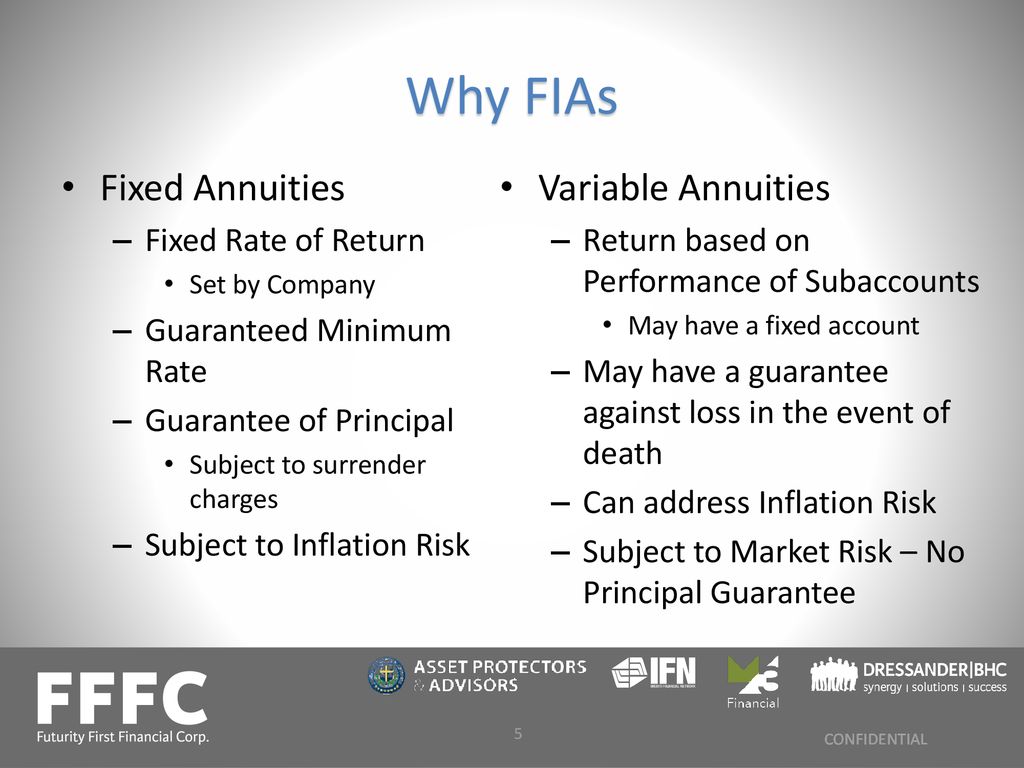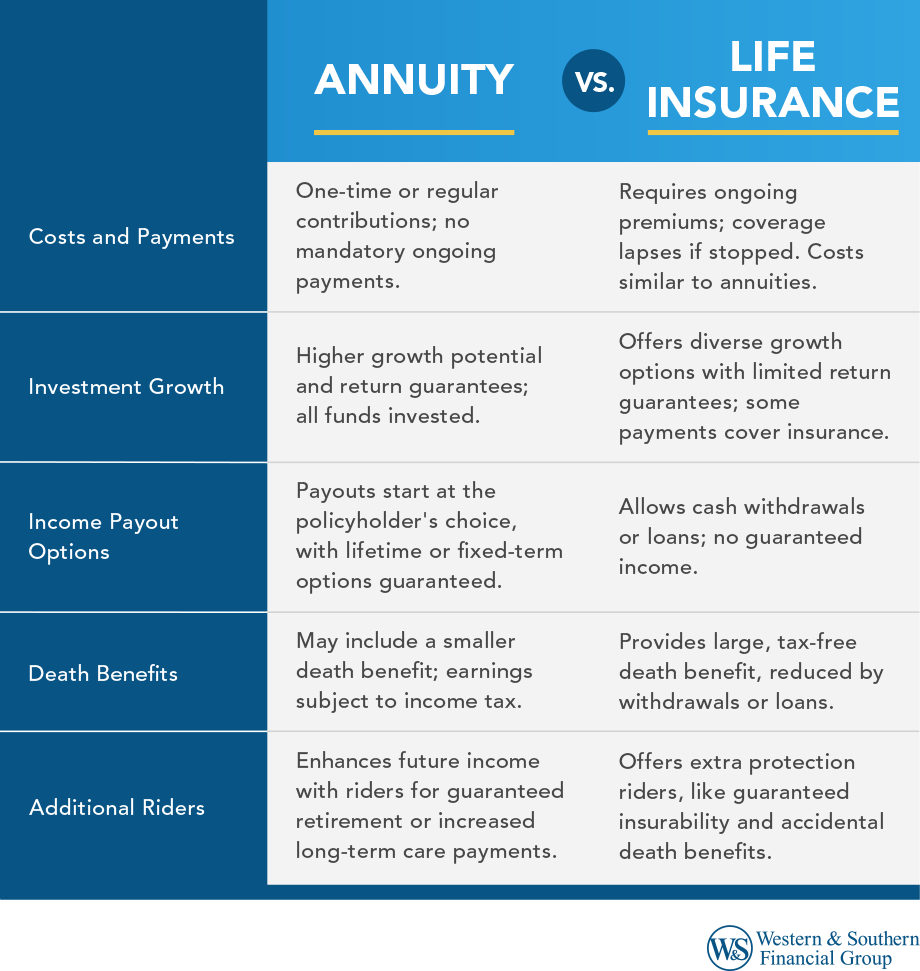All Categories
Featured
Table of Contents
Equally as with a repaired annuity, the owner of a variable annuity pays an insurance policy business a round figure or collection of repayments in exchange for the guarantee of a series of future settlements in return. Yet as mentioned over, while a fixed annuity expands at an assured, continuous rate, a variable annuity grows at a variable rate that relies on the efficiency of the underlying financial investments, called sub-accounts.

Throughout the build-up phase, properties bought variable annuity sub-accounts grow on a tax-deferred basis and are exhausted just when the agreement proprietor withdraws those earnings from the account. After the buildup phase comes the revenue stage. Over time, variable annuity properties need to in theory boost in worth till the agreement proprietor chooses she or he wish to begin withdrawing money from the account.
The most significant concern that variable annuities normally existing is high price. Variable annuities have several layers of costs and expenditures that can, in accumulation, produce a drag of as much as 3-4% of the agreement's worth each year. Below are the most usual charges associated with variable annuities. This cost makes up the insurance firm for the risk that it presumes under the terms of the agreement.
Analyzing Strategic Retirement Planning A Comprehensive Guide to Investment Choices Breaking Down the Basics of Variable Annuity Vs Fixed Annuity Features of Smart Investment Choices Why Choosing the Right Financial Strategy Matters for Retirement Planning How to Compare Different Investment Plans: A Complete Overview Key Differences Between Different Financial Strategies Understanding the Key Features of Fixed Indexed Annuity Vs Market-variable Annuity Who Should Consider Strategic Financial Planning? Tips for Choosing the Best Investment Strategy FAQs About Pros And Cons Of Fixed Annuity And Variable Annuity Common Mistakes to Avoid When Choosing What Is Variable Annuity Vs Fixed Annuity Financial Planning Simplified: Understanding Immediate Fixed Annuity Vs Variable Annuity A Beginner’s Guide to Smart Investment Decisions A Closer Look at Annuity Fixed Vs Variable
M&E cost costs are determined as a percent of the contract worth Annuity providers hand down recordkeeping and other administrative expenses to the agreement proprietor. This can be in the type of a flat annual cost or a percent of the agreement value. Management fees might be included as part of the M&E danger charge or might be analyzed separately.
These fees can vary from 0.1% for easy funds to 1.5% or even more for actively managed funds. Annuity agreements can be personalized in a number of means to offer the specific requirements of the contract owner. Some usual variable annuity motorcyclists consist of ensured minimum buildup advantage (GMAB), ensured minimum withdrawal advantage (GMWB), and ensured minimal revenue advantage (GMIB).

Variable annuity contributions give no such tax reduction. Variable annuities tend to be extremely inefficient vehicles for passing wealth to the future generation due to the fact that they do not delight in a cost-basis adjustment when the initial agreement owner passes away. When the owner of a taxed financial investment account passes away, the cost bases of the financial investments held in the account are changed to show the marketplace prices of those financial investments at the time of the owner's death.
Decoding Variable Vs Fixed Annuities A Comprehensive Guide to Investment Choices Defining Fixed Index Annuity Vs Variable Annuity Pros and Cons of Various Financial Options Why Choosing the Right Financial Strategy Is Worth Considering How to Compare Different Investment Plans: Explained in Detail Key Differences Between Fixed Income Annuity Vs Variable Growth Annuity Understanding the Key Features of Long-Term Investments Who Should Consider Fixed Interest Annuity Vs Variable Investment Annuity? Tips for Choosing the Best Investment Strategy FAQs About Planning Your Financial Future Common Mistakes to Avoid When Planning Your Retirement Financial Planning Simplified: Understanding Fixed Vs Variable Annuity Pros Cons A Beginner’s Guide to Smart Investment Decisions A Closer Look at Indexed Annuity Vs Fixed Annuity
Therefore, successors can acquire a taxed investment portfolio with a "fresh start" from a tax viewpoint. Such is not the situation with variable annuities. Investments held within a variable annuity do not receive a cost-basis modification when the initial proprietor of the annuity dies. This suggests that any kind of collected latent gains will certainly be passed on to the annuity owner's beneficiaries, together with the associated tax obligation problem.
One substantial concern associated to variable annuities is the possibility for conflicts of interest that might feed on the part of annuity salesmen. Unlike an economic advisor, who has a fiduciary obligation to make investment choices that benefit the client, an insurance policy broker has no such fiduciary responsibility. Annuity sales are highly financially rewarding for the insurance policy experts who market them due to the fact that of high upfront sales compensations.

Several variable annuity contracts include language which places a cap on the portion of gain that can be experienced by particular sub-accounts. These caps avoid the annuity proprietor from fully taking part in a section of gains that could otherwise be appreciated in years in which markets produce significant returns. From an outsider's point of view, it would certainly appear that investors are trading a cap on investment returns for the aforementioned guaranteed floor on investment returns.
As noted above, surrender costs can significantly restrict an annuity proprietor's capability to move possessions out of an annuity in the early years of the agreement. Additionally, while the majority of variable annuities enable agreement proprietors to take out a specified amount during the buildup phase, withdrawals beyond this amount typically result in a company-imposed cost.
Withdrawals made from a set rate of interest financial investment alternative could likewise experience a "market price modification" or MVA. An MVA changes the value of the withdrawal to mirror any changes in rate of interest from the moment that the cash was bought the fixed-rate alternative to the moment that it was taken out.

Fairly typically, even the salesmen that offer them do not completely recognize just how they function, and so salesmen occasionally prey on a purchaser's emotions to market variable annuities instead of the benefits and viability of the products themselves. Our team believe that financiers must fully recognize what they own and exactly how much they are paying to possess it.
Understanding Financial Strategies A Comprehensive Guide to Investment Choices What Is the Best Retirement Option? Advantages and Disadvantages of Fixed Index Annuity Vs Variable Annuity Why Fixed Income Annuity Vs Variable Annuity Can Impact Your Future Fixed Index Annuity Vs Variable Annuity: How It Works Key Differences Between Different Financial Strategies Understanding the Key Features of Long-Term Investments Who Should Consider Fixed Index Annuity Vs Variable Annuity? Tips for Choosing Fixed Annuity Vs Equity-linked Variable Annuity FAQs About Variable Vs Fixed Annuities Common Mistakes to Avoid When Choosing Variable Annuity Vs Fixed Annuity Financial Planning Simplified: Understanding Fixed Income Annuity Vs Variable Annuity A Beginner’s Guide to Fixed Vs Variable Annuity Pros And Cons A Closer Look at How to Build a Retirement Plan
Nevertheless, the exact same can not be claimed for variable annuity assets held in fixed-rate financial investments. These properties legally belong to the insurer and would consequently go to threat if the business were to fall short. In a similar way, any guarantees that the insurance firm has agreed to offer, such as a guaranteed minimal income benefit, would be in question in case of an organization failing.
Prospective purchasers of variable annuities should understand and think about the economic problem of the providing insurance policy company prior to getting in right into an annuity agreement. While the advantages and disadvantages of various types of annuities can be disputed, the genuine issue surrounding annuities is that of viability.
As the claiming goes: "Customer beware!" This article is prepared by Pekin Hardy Strauss, Inc. Pros and cons of annuities. ("Pekin Hardy," dba Pekin Hardy Strauss Wide Range Administration) for informational purposes only and is not planned as a deal or solicitation for organization. The information and data in this write-up does not comprise legal, tax obligation, accounting, financial investment, or various other specialist advice
Table of Contents
Latest Posts
Exploring the Basics of Retirement Options Everything You Need to Know About Financial Strategies Defining Annuity Fixed Vs Variable Benefits of Choosing the Right Financial Plan Why Choosing the Righ
Analyzing Fixed Income Annuity Vs Variable Annuity A Closer Look at Fixed Annuity Vs Equity-linked Variable Annuity Breaking Down the Basics of Variable Vs Fixed Annuities Pros and Cons of Fixed Vs Va
Breaking Down Your Investment Choices Everything You Need to Know About Fixed Vs Variable Annuities Defining the Right Financial Strategy Pros and Cons of Fixed Index Annuity Vs Variable Annuities Why
More
Latest Posts